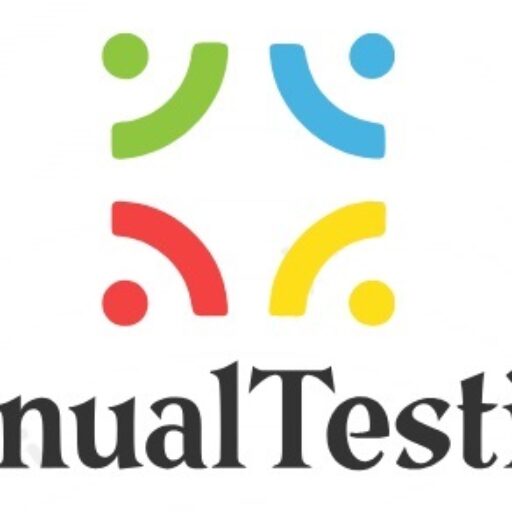Are you gearing up for a top 30 Essential Software Manual Testing Interview Questions? Whether you’re a fresher stepping into the industry or an experienced professional looking to enhance your skills, this blog post is your ultimate guide! Dive into a curated list of 30 comprehensive software testing questions with multiple-choice options. Test your knowledge, learn new concepts, and get ready to impress your interviewers. Let’s navigate the world of software testing together!

Top 30 Essential Software Manual Testing Interview Questions for Fresher and Experienced Candidates
Top 30 Essential Software Manual Testing Interview Questions for Fresher and Experienced Candidates
Table of Contents
- What is the purpose of software testing?
- a) To find bugs in the software
- b) To guarantee 100% bug-free software
- c) To make the development process longer
- d) None of the above
- Answer: a
- Which testing type is focused on the behavior of the whole system as opposed to individual components?
- a) Unit Testing
- b) Integration Testing
- c) System Testing
- d) Acceptance Testing
- Answer: c
- What is the main goal of regression testing?
- a) To verify that the new code changes work as expected
- b) To ensure that existing features still work after changes
- c) To test a completely new software application
- d) None of the above
- Answer: b
- Which testing level is often referred to as “End-to-End” testing?
- a) Unit Testing
- b) Integration Testing
- c) System Testing
- d) Acceptance Testing
- Answer: d
- What is the purpose of the ‘boundary value analysis’ testing technique?
- a) To test how the software behaves with extreme inputs
- b) To analyze the boundaries of the software
- c) To identify bugs in the code
- d) To test only the input values
- Answer: a
- What is the difference between smoke testing and sanity testing?
- a) Both are the same
- b) Smoke testing is broader, while sanity testing is narrow and focused
- c) Sanity testing is broader, while smoke testing is narrow and focused
- d) Neither is used in software testing
- Answer: b
- Which of the following is a white-box testing technique?
- a) Black-box testing
- b) Equivalence partitioning
- c) Statement coverage
- d) Boundary value analysis
- Answer: c
- What is the purpose of load testing?
- a) To test the functionality of the software
- b) To check the system’s ability to handle a specific load
- c) To find security vulnerabilities
- d) To test the user interface
- Answer: b
- What does the term ‘alpha testing’ refer to?
- a) Testing performed by end-users
- b) Testing performed by developers
- c) Testing performed before beta testing
- d) Testing performed by an external team
- Answer: a
- Which of the following is a static testing technique?
- a) Unit testing
- b) Regression testing
- c) Walkthrough
- d) Stress testing
- Answer: c
- What is the primary purpose of usability testing?
- a) To find defects in the software
- b) To ensure the software is user-friendly
- c) To test the performance of the software
- d) To verify the security features
- Answer: b
- What is the difference between verification and validation in software testing?
- a) Both terms are interchangeable
- b) Verification ensures the product is built right; validation ensures the right product is built
- c) Validation ensures the product is built right; verification ensures the right product is built
- d) Neither term is used in software testing
- Answer: b
- What is the purpose of a test plan in software testing?
- a) To describe the features of the software
- b) To identify defects in the code
- c) To define the approach for testing a specific project
- d) To specify the hardware requirements
- Answer: c
- Which testing technique involves testing the software’s behavior against its specifications?
- a) Black-box testing
- b) White-box testing
- c) Grey-box testing
- d) Alpha testing
- Answer: a
- What is the role of a test case?
- a) To define the test environment
- b) To document the test plan
- c) To specify the actions and expected outcomes for a particular test scenario
- d) To manage project resources
- Answer: c
- In software testing, what is the purpose of a test scenario?
- a) To describe the features of the software
- b) To specify the actions and expected outcomes for a particular test
- c) To identify defects in the code
- d) To perform stress testing
- Answer: b
- What is the primary goal of performance testing?
- a) To identify security vulnerabilities
- b) To ensure the software is user-friendly
- c) To assess the software’s speed, responsiveness, and stability under various conditions
- d) To find defects in the code
- Answer: c
- Which testing phase is typically conducted by end-users?
- a) Unit testing
- b) System testing
- c) Acceptance testing
- d) Integration testing
- Answer: c
- What is the purpose of exploratory testing?
- a) To execute predefined test cases
- b) To discover defects in the software by exploring and interacting with it
- c) To automate test scenarios
- d) To test the software’s performance
- Answer: b
- What does the term ‘test harness’ refer to in software testing?
- a) A set of test cases
- b) A collection of input values
- c) The test environment setup needed to run test cases
- d) A testing framework
- Answer: c
- What is the purpose of the equivalence partitioning technique?
- a) To divide the input domain into classes of data from which test cases can be derived
- b) To execute a specific set of test cases
- c) To automate test scenarios
- d) To analyze the boundaries of the software
- Answer: a
- Which testing level is focused on verifying the interactions between different components or systems?
- a) Unit testing
- b) Integration testing
- c) System testing
- d) Acceptance testing
- Answer: b
- What is the purpose of a defect life cycle in software testing?
- a) To document the features of the software
- b) To identify defects in the code
- c) To manage and track the life cycle of a defect from discovery to closure
- d) To perform stress testing
- Answer: c
- What is the main objective of security testing?
- a) To ensure the software is user-friendly
- b) To assess the software’s speed and responsiveness
- c) To identify vulnerabilities and weaknesses in the software
- d) To automate test scenarios
- Answer: c
- Which testing technique involves executing test cases that execute the software’s code line by line?
- a) Black-box testing
- b) White-box testing
- c) Grey-box testing
- d) Alpha testing
- Answer: b
- What is the purpose of a defect report in software testing?
- a) To define the test environment
- b) To document the test plan
- c) To identify defects in the code
- d) To report and track defects found during testing
- Answer: d
- What is the significance of the term ‘test coverage’ in software testing?
- a) The percentage of defects found
- b) The extent to which the software has been tested
- c) The speed of test execution
- d) The number of test cases executed
- Answer: b
- What is the primary purpose of the ‘stress testing’ technique?
- a) To find defects in the software
- b) To assess the software’s speed and responsiveness under high load
- c) To execute predefined test cases
- d) To ensure the software is user-friendly
- Answer: b
- What is the purpose of the ‘smoke testing’ technique?
- a) To ensure the software is user-friendly
- b) To execute a specific set of test cases
- c) To identify defects in the code
- d) To verify the stability of the software build
- Answer: d
- Which testing phase focuses on validating whether the software meets the specified requirements?
- a) Unit testing
- b) System testing
- c) Acceptance testing
- d) Regression testing
- Answer: c
Feel free to use these questions for interview preparation!

